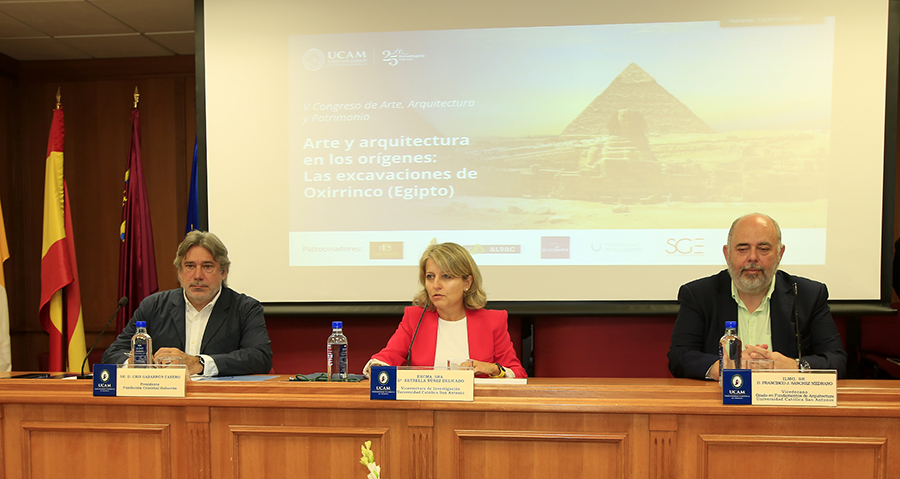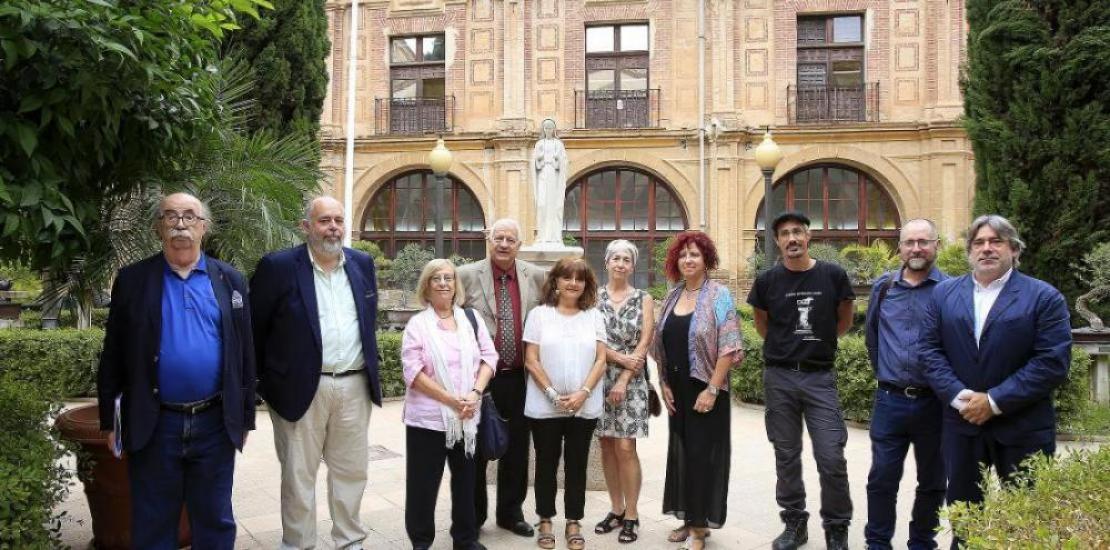The Oxyrhynchus excavations in Egypt mark 30th anniversary with new discoveries
The UCAM's Cristóbal Gabarrón International Chair of the Arts inaugurated its 5th Conference on Art and Architecture, with the participation of, among others, the current coordinators of the excavation and the expert Hassan Amer, professor at Cairo University, today at the Los Jerónimos Campus.
Two hundred years have passed since François Champollion deciphered the Rosetta Stone
and the magic hidden in Egypt began to be truly discovered, thus opening the way for
universities to study it. It is now the 30th anniversary of the Spanish teams’ excavations of
Oxyrhynchus (Egypt), the main theme of the 5th Conference on Art and Architecture organised
by the Cristóbal Gabarrón International Chair of the Arts at UCAM, which began this morning at
the Los Jerónimos Campus and will continue tomorrow, Friday. The inauguration was attended
by Estrella Núñez, UCAM Vice-Rector of Research; Cris Gabarrón, President of the Fundación
Gabarrón; and Francisco José Sánchez, Vice-Dean of the Bachelors Degree in Principles of
Architecture.

The UCAM Vice-Rector of Research stated the institution's interest in these forums for debate
‘to promote interaction between researchers, students and society’, and highlighted the qualities
of architecture and art, ‘as a historical social document, which provides information on the way
of life, culture and the evolution of different civilisations’.
This type of event highlights the academic and practical side of art and architecture, according
to Cris Gabarrón, who recalled that the Conference has also organised the exhibition "Oxyrhynchus, the fish that conquered the sands".
It is located in the Museo Cristóbal Gabarrón
(Mula), where visitors can see the secrets of the Egyptian culture discovered there first hand.
From Saite culture to Christianism
Oxyrhynchus covers a very broad chronology within history, from the Saite period of 664 BC to
the seventh century, where many cultures coexisted and overlapped and understood each
other: Egyptians, Greeks, Romans, until the arrival of Christians. The current co-directors of the
archaeological excavation of Oxyrhynchus (El-Bahnasa), Esther Pons and Maite Mascort,
stressed how, as they excavate and make discoveries, the change of civilisations is becoming
clearer and clearer: ‘In the Saite and Greco-Roman periods, there were large, stone structures
with vaulted ceilings, with many rooms and funerary chambers, with sarcophagi inside
containing the mummified individual and with important grave goods that accompanied the
deceased. Then, during the Christian period, there was the great basilica with the columns, the
crypt, the decoration of the walls and the crosses’. They also recalled that last year, after 30
years of work there, an intact tomb was discovered; a great find. The current challenge is to
continue excavating and discovering more tombs, as the current mission is focused on the
necropolis.
The price of plunder
‘The percentage of the city that has been plundered remains unknown, but it is huge. It is a pity
that the richness of this culture has been affected by this,’ said Hassan Amer, professor at Cairo
University, who noted that, in the 200-kilometre area, ‘there are still many things buried and
undiscovered’. ‘I hope that future generations will understand that to preserve the legacy of a
culture we must respect it,’ he added.
On the other hand, Josep Padró, director of the Oxyrhynchus archaeological mission between
1992-2019, pointed out that the excavations were abandoned for 50 years, noting that, after the
passage of the English, Italians, and staff from the Museum of Alexandria, ‘they stopped around
the 1930s, and from then on the sacking began, enriching the antiquities market’.




